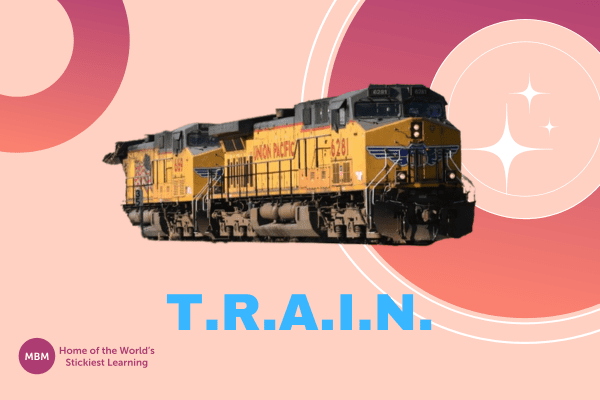Turbocharge Your Company’s Success with Line Management Training
For those of us who lead others, line management training is essential for success. It builds the mid-level section of our organisation as well as creates future senior-level leaders. However, without line management training, we will end up with gaps in the team. Our line managers create a key link between the line staff and senior management. Without them, there is an inexcusable gap that we can manage properly through line management training.
What is Line Management?
By definition in the Cambridge dictionary, a line manager is “someone directly in charge of workers”.
This means that everyone in roles from team leaders to assistant heads of departments makes up these levels in the team. They are key elements in organisations when it comes to getting results. So we need to properly understand the role that they play. We also need to ensure line management training is happening to better develop these key roles. Unfortunately, we very often overlook the possibilities. Our Line Managers (team leaders, supervisors, and assistant managers), are essential in our overall success.
What is Line Management Training?

Line Management training is a development approach for all those who are in those roles of leading others in the workplace. This can come in many different forms.
1- On-the-job Training:
One approach could be on-the-job training. Here, the individual trains with another member of the team to learn new and enhanced tasks, knowledge, and skills. This can be a very effective way to train our line managers through first-hand experience. By taking this approach, the trainee has someone who has the skills and knowledge.
Monitoring progress also happens effectively here. We need to ensure that the trainer in this case is the right choice. Also, we do not want to see bad habits or attitudes being transferred from an ineffective trainer during this time. Hence, effective selection at this point is key.
2 – Classroom Training Sessions:
The next approach can be classroom-based training sessions. These can be individual sessions or more detailed programmes. Individuals gain the theory of the topic that they will then apply in practice on the job. Here, we should either have a properly experienced trainer on the team to conduct the sessions or a reliable external resource.
Classroom training can allow for a great exchange of ideas and knowledge. Also, it allows the trainee to get the training away from their normal surroundings. This can take them out of their comfort zone and push them to try something new.
Not everyone is comfortable with classroom training for multiple reasons. Some might have difficulty with reading and writing. Others may have a language barrier that could lead them to fall behind. Others may be introverts who are uncomfortable speaking in front of others in a group setting. Consider all of this before committing time, effort, and potentially money to this approach. We want our line management training to be successful and have positive results.
3 – External Cross-exposure:
Another approach can be external cross-exposure. Here we see the individual visiting another site or company for on-the-job training. This allows those involved to learn from others they are not familiar with. When the trainee knows the trainer from daily interactions, it can mean that you don’t always get the same results. By sending them outside their usual environment, it can allow the trainee to feel a greater sense of importance. They may thrive better in a different environment, with new people and different perspectives.
Be sure to agree on the training objectives and expectations with the receiving company before starting. Then, ask for a report or evaluation of their performance against the set goals after the training has happened. Ensure you choose a partner you can trust for this training approach.
4 – Online Training:
There are limitless online training courses and sites available to use for ongoing development. As leaders, we can offer financial support for line management training to happen online. Here, we need to ensure the following areas are covered.
First, check the sites on offer before committing to them. We should check their content as well as their reliability. Secondly, look at setting timeframes for completion. Without these, the online course could continue indefinitely. Also, some sites have their own timeframes, so we need to ensure that these are realistic in terms of completion. And a final consideration, ensure that the individuals have the necessary resources available to complete online training courses. Allow time within the normal working day for trainees to use company equipment to invest in their course. Alternatively, make resources such as a laptop or tablet available that trainees can take home with them for the purpose of completing their training in their free time.
Why is Training Important for Line Managers?
From personal experience, line management training is often overlooked by many companies, which is a big mistake. Line management training has many positive benefits for a company. Here are some of the many reasons for investing time, effort, and money in line management training.
Line management training sees the following opportunities for companies:
- Reduced turnover due to development opportunities
- Increased revenue through better performance
- Improved staff morale at all levels
- Increased productivity and time management
- Improved job security
- Improved communication, empathy, and other leadership skills
- Increased job knowledge and skills to share
- Improved longevity and retention of talent
- Increased commitment and loyalty to the company
- Improved overall performance
- Increased motivation and commitment to their role
- Increased sense of belonging to the company
When you consider all of the above-mentioned benefits, it is surprising that any company would fail to create line management training opportunities within their organisation.
5 Reasons Why Line Management Training is Lacking?

So, why does line management training not always happen? Why does it not always get the proper attention and commitment it deserves? There are a number of reasons, here we will cover the following five areas.
1. Fear of Being Replaced
Here we see that some senior managers avoid developing those in more junior positions. This can happen mainly because of the following reason. Many have the idea that, if I train this person to do this job or task, they might do it better than me. This leads to some preventing others from having training and development opportunities. However, this just leads to some of the company’s best talent simply leaving to find these opportunities elsewhere.
2. Lack of Trust/Confidence
Here we see the mindset of “I can’t give them the task because they did it badly the first time”. Many times we give responsibility and delegate to members of our line management team without proper training. Therefore, we are setting them up to fail. However, what happens here is that the barrier is created by the delegator, not the person who receives the delegated task.
3. Lack of Proper Planning
Very often training simply happens for the sake of training, without proper purpose or reasons. Many companies create monthly or quarterly training hour targets to achieve. So, training happens for this to be reached, without proper consideration for who should be trained, what should be trained, and why.
4. Micromanagement
Here we cannot release control, no matter how well the person is doing. With line management training, this could be properly eliminated. Empowerment could allow others to take on more responsibility without every step they take being looked over and scrutinised.
Related Material ⇒ Learn how Micromanaging can damage your business.
5. Budget
A lot of companies just do not believe in the investment in line management training. Unfortunately, they believe that it is the responsibility of the staff to come trained or look at self-development. However, this can backfire for the company as it shows a lack of commitment from their side to develop their team.
How Do You Train a Line Manager?
There are 3 simple ways we can create great line management training.

1. Planning/Preparation
The first step is to have a plan. Decide what training is needed and for who. This is where conducting a gap analysis is a great tool to use. Conduct on-the-job checks of the level of knowledge and skills of the particular individuals. This will ensure that we are applying the proper line management training that will have the greatest impact on both the individual and the team.
2. Commitment
We need to commit on different levels. The first is committing to a proper personal development plan. Create a clear plan that identifies the training required and the expectations at the end of the training. Commit to timeframes and support throughout the programme. This can be done for on-the-job training, cross-exposure, individual training courses and more detailed programmes.
Next, we get the commitment from the person being developed. This means that they understand what training will happen, why and what their role and responsibilities will be. By doing this, we ensure that everyone involved has a clear picture of what to expect. This commitment from the trainee is essential and holds them accountable for their part in the plan.
Our next commitment step is to ensure that trainees are given time to complete the line management training being offered.
From personal experience as a Learning and Development Manager, this can be one of the biggest challenges. We see people making excuses not to release the trainees for the sessions despite having committed to the same. Excuses get made from the older people that the trainees are needed in their areas and cannot attend for x or y reasons, leaving gaps in their learning experience. Line management training needs full commitment from all sides.
A final area of commitment is practical application or commitment to post-session assignments.
These activities are essential to ensure learning has actually taken place. Without these checks, you cannot guarantee that the time and effort invested by all involved has provided a return on investment. It also allows you to revisit the first step of the gap analysis to see where continued improvement might be required. This commitment step is required from everyone involved, the trainer, the trainee, and the senior leader supporting the plan. Ensure these are all happening to get the best possible results.
3. The Next Step
Here, we revisit the original personal development plan. Have a conversation regarding what has been completed and what has been achieved. If the plan is for development within the same role, we should be seeing improvement within the current role and enhanced results. Other plans might be for career development. This means that the conversation we are having now is about the next step in the career of the trainee, as agreed. Review the details in the personal development plan. Now, look at the transition from one role to another, as a result of improvements achieved during the training.
What Can We Do to Improve Training Results?
There are a number of things we can do to ensure that line management training happens and is successful. As leaders, we need to apply the following:

1 – Trust the Team
We need to be able to identify future talent and give them the opportunities to reach their full capabilities. We also need to be able to see the potential in others, even after mistakes have occurred. Leaders need to be able to trust their line management staff so they can return that trust.
2 – Release Control
Here we can see empowerment come into play. We have committed to line management training and now need to give some control and responsibility to those we have developed. Otherwise, why did we bother with the training in the first place? Without releasing some control to those now capable of the tasks, we can unnecessarily demotivate those involved.
3 – Assign Goals
We need to ensure those goals and targets are in place as part of the personal development plan we covered earlier in the article. This will allow the line managers to have something to work towards. It also allows us to track progress. Ensure there are regular reviews of these goals and targets.
4 – Increase Recognition
As leaders, we need to support and recognise those during line management training plans. So, ensure that even small steps of progress are recognised. This doesn’t always mean a promotion, it can also mean public appreciation as well as increased responsibility and new training opportunities.
5 – Nurture Your Talent
We need to ensure that line management training is happening. The last thing we want is to see our best talent leave the company because of a lack of development opportunities. If we don’t have the money to invest in classroom training sessions, use on-the-job training to ensure development is still occurring. Also, encourage the use of free online training sessions.

>> Sticky Learning Coaching Cards <<
Time for a Recap
At the end of the day, we need our line managers. We want to ensure that line management training is an ongoing process. We have an obligation to create personal development and succession plans that make sense. That way, our industries thrive.
Remember, line management training is an investment of time, effort, and, often, finances. Therefore, everyone involved must be invested and committed to getting the best results and return on investment. So, ensure line management training is properly planned, and reaches the right target audience with the right topics and approach. Also, check that everyone involved is properly committed. And, finally, ensure that proper follow-up is done and that line management training is achieving the results we hoped for.
Check out: evaluating training for measuring your ROI from training.




